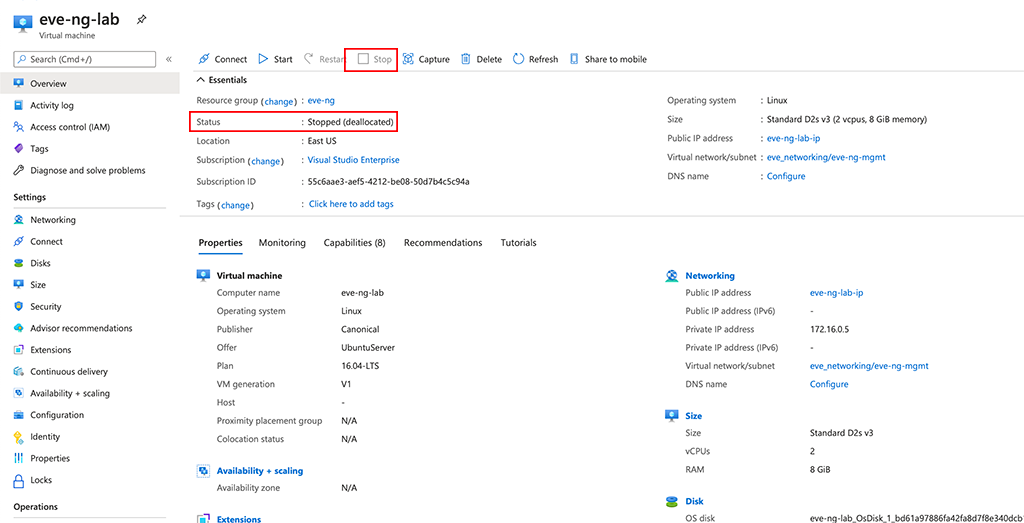
- #UKSM STATUS IN EVE NG UPDATE#
- #UKSM STATUS IN EVE NG UPGRADE#
- #UKSM STATUS IN EVE NG SOFTWARE#
- #UKSM STATUS IN EVE NG LICENSE#
It usually solves automatically in 15 minutes.
#UKSM STATUS IN EVE NG LICENSE#
#UKSM STATUS IN EVE NG UPDATE#
Update to the latest EVE (apt-get update & apt-get upgrade).So you want to try for yourself? There's a great post on getting started with UnetLab on Lab Time, and the procedure for EVE is pretty much the same. So yes, it sounds too good to be true but in this case it actually is. With UKSM I can now run much larger and more stable labs on the same hardware that I was using for UNL. I used to try to reduce the amount of RAM to the minimum needed for the device to boot at all, usually way beyond its published minimum requirements. In my experience, lab size is mostly limited by the amount of memory I have available. After a while it settled on just 41% memory use, and uksmd dropped to using under 1% CPU for running in the background. Immediately the UKSM process (uksmd) started grabbing as much CPU as it could get its hands on, and memory use began dropping. After the topology is completely started, it's using all available memory:Īt this point, I enabled UKSM: echo 1 > /sys/kernel/mm/uksm/run In total this is almost 13 GB memory, which is really pushing my EVE machine with 12 GB RAM to the limit. 3 Route Injectors, also 256MB RAM each.2 Cisco routers (IOL), with 256 MB RAM.11 Juniper vMX routers, with 1GB RAM each.I took the biggest lab I had, which is my JNCIP-ENT preparation lab based on the topology from the book Junos Enterprise Routing: Luckily it's pretty easy to turn UKSM on and off, by setting /sys/kernel/mm/uksm/run to 0 (disabled) or 1 (enabled). This sounds too good to be true, so of course I wanted to test this. Deduplication will mean you can run even more routers in your lab, without your EVE-machine running out of memory. If you're running a lab with ten routers, you're essentially running the same virtual machine ten times, and the memory pages these VMs are using will probably not be very much different from each other. With EVE, the benefit of memory deduplication could be huge. It automatically scans all processes in memory and applies deduplication techniques to eliminate the waste of having the same information in memory multiple times. So how does it work and why is it interesting? UKSM (Ultra Kernel Samepage Merging) is an improvement over the Linux kernel module KSM. I mentioned UKSM, and that it reduces memory demand for EVE. There are plenty of other improvements in EVE compared to UNL, but so far the list above are my personal favorites. In addition to this, you can now search and filter in the list when adding a new node, which is a good thing because it's a long list and it could be quite a hassle to find the image you want in UnetLab. UKSM is implemented and enabled by default, greatly reducing memory requirements compared to UnetLab.Okay, so it's just a small cosmetic change, but I still like it! Stopped nodes are now a different color than running nodes (grey-ish instead of blue-ish), so it's a lot easier to quickly see which nodes are running and which aren't.So for now I'm still using the legacy UI for most of my work.
#UKSM STATUS IN EVE NG SOFTWARE#
Unfortunately the new UI is not yet free of bugs in this (preview) release, and still requires client software on the client for wireshark integration anyway. This will make it much easier to run EVE on a server somewhere and provide remote labs for co-workers or students. New HTML5 UI, including browser-based implementations of telnet, vnc, and rdp to connect to your devices without requiring opening more TCP-ports or installing stuff on your client.To me, the most interesting new features are:
#UKSM STATUS IN EVE NG UPGRADE#
So what's the big deal about EVE then? There's a list of new features, including the obligatory bug fixes and an upgrade to Ubuntu 16.04 as base platform. Take a look at this video to see UnetLab in action. Just throw a couple of images at it (EVE-NG supports a whole lot of different vendors), and start labbing. The great thing about UnetLab (and thus also about EVE-NG) is that everything is contained within a single VM, and you use a web-interface to create and manage your labs. You can use it to spin up and connect a couple of switches and routers, in order to validate designs, test changes, or prepare for certification exams. For those of you that don't know what UnetLab is: it's a piece of software that you can use to emulate network equipment, much like GNS3. EVE (or formally: "Emulated Virtual Environment") is the successor to UnetLab.

On January 1st the UnetLab team has released the first preview of EVE-NG.


 0 kommentar(er)
0 kommentar(er)
